Related Research Articles

Luis de Góngora y Argote was a Spanish Baroque lyric poet and a Catholic priest. Góngora and his lifelong rival, Francisco de Quevedo, are widely considered the most prominent Spanish poets of all time. His style is characterized by what was called culteranismo, also known as Gongorismo. This style existed in stark contrast to Quevedo's conceptismo.

The University of Cádiz, commonly referred to as UCA, is a public university located in the province of Cádiz, Andalusia, Spain, noted for its medicine and marine sciences curricula. It was founded in 1979, and has the Latin motto Non Plus Ultra. Its headquarters are located in Cádiz, where the Rectorate is. During the 2007/2008 academic year, there were 17,280 students, 1698 lecturers, and 680 administration and services workers associated with the university.
Gabriel Zaid is a Mexican writer, poet and intellectual.

Ántero Flores-Aráoz Esparza is a Peruvian lawyer and politician who briefly served as Prime Minister of Peru in November 2020. Once a prominent member and leader of the Christian People's Party, he left and founded the Order Party in order to run for the presidency at the 2016 general election, in which he placed tenth and last with 0.4% of the popular vote.
The term Peruvian literature not only refers to literature produced in the independent Republic of Peru, but also to literature produced in the Viceroyalty of Peru during the country's colonial period, and to oral artistic forms created by diverse ethnic groups that existed in the area during the prehispanic period, such as the Quechua, the Aymara and the Chanka South American native groups.
Romanticism arrived late and lasted only for a short but intense period, since in the second half of the 19th century it was supplanted by Realism, whose nature was antithetical to that of Romantic literature.
Spanish Enlightenment literature is the literature of Spain written during the Age of Enlightenment.
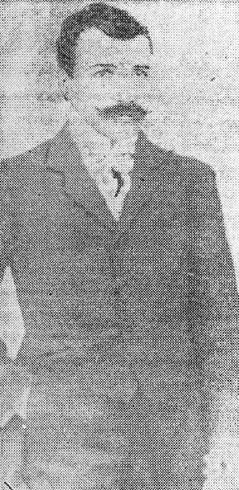
Selva lirica is an anthology published in 1917 by the Chilean Julio Molina Nuñez.

José Núñez de Cáceres y Albor was a Dominican politician and writer. He is known for being the leader of the independence movement against Spain in 1821 and the only president of the short-lived Republic of Spanish Haiti, which existed from December 1, 1821 to February 9, 1822. This period was known as the ephemeral independence because it quickly ended with the Unification of Hispaniola under the Haitian government.
Efrén Núñez Mata was a Mexican medical doctor, teacher, poet, writer and academic.
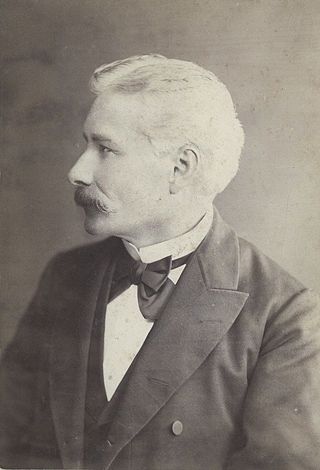
Numa Pompilio Llona was an Ecuadorian poet, journalist, educator, diplomat, and philosopher.

Raúl Albentosa Redal is a Spanish professional footballer who plays as a centre-back for Danish Superliga club Vejle Boldklub.
El Duende was a Dominican newspaper from Santo Domingo founded by José Núñez de Cáceres. It was the second Dominican paper. It printed its first issue just a few days after Núñez de Cáceres' second paper, El Telégrafo Continental de Santo Domingo, had appeared. Both papers were the result of an increasing politicization among the Dominican criollos in Santo Domingo, who were at the time under the Spanish colonial government. Political satire, opinions, and dialogue about the colony's relation with Spain were the main uses of this paper. Though it lasted for only four months, it left a precedent that inspired similar contributions later in the 19th century. Through it, Núñez de Cáceres developed himself as a fabulist, publishing stories he signed as "El Fabulista Principiante" (novice).
Carajicomedia is a 16th-century Spanish poetic work of 117 stanzas composed of eight 12-syllable verses. It appeared for the first and only time in print at the end of the Cancionero de obras de burlas provocantes a risa (1519). It is a sexual parody of a little more than a third of Juan de Mena’s very famous but now unfashionable El Laberinto de Fortuna, an allegorical vision poem written in very Latinate language. The text parodied, however, is actually the first printing of Hernán Núñez's edition of El Laberinto entitled Las Trezientas (1499), because Carajicomedia, not only parodies Mena's poem, but also Núñez's prologue and notes.
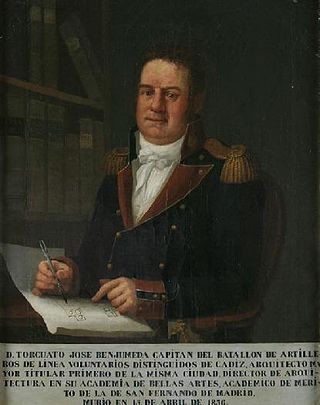
Torcuato José Benjumeda y Laguada was a Spanish architect. A disciple of Torcuato Cayón, he was one of the most important Neoclassical architects in Andalusia, designing several of the most prominent buildings in Cádiz. These include the Royal Prison, the Church of St. Peter and St. Paul and the Ayuntamiento.
José Manuel Núñez Martín, commonly known as Chema or Chema Núñez, is a Spanish footballer. Mainly an attacking midfielder, he can also play as right winger.

Manuel Arturo Merino de Lama is a Peruvian politician who briefly served as President of Peru for six days between 10 and 15 November 2020. He also served as the President of Congress from 16 March 2020 to 15 November 2020. He was a Member of Congress (AP) representing the Tumbes constituency for the 2001–2006, 2011–2016, and 2020–2021 terms.
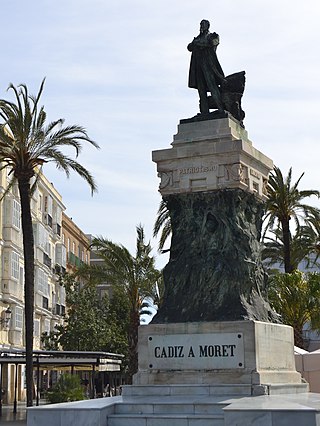
The Monument to Moret is an instance of public art in Cádiz, Spain. Designed by Agustín Querol, it consists of a bronze statue of Liberal politician Segismundo Moret put on top of a pedestal displaying elaborated allegorical reliefs.
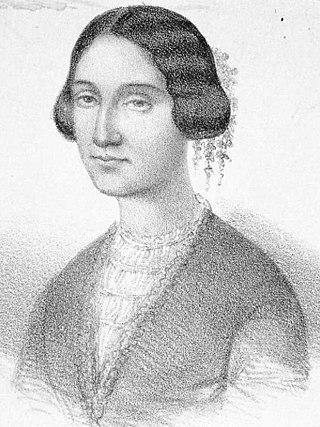
Dolores Cabrera y Heredia was a Spanish Romantic poet and novelist. A native of Aragon, she moved throughout Spain first following her father, then her husband. She showed an early aptitude for poetry and wrote for most of her life.
Pedro Alberto Benito Ponomar is a Spanish footballer who plays as a forward for UD San Sebastián de los Reyes.
References
- ↑ Morgado García, Arturo, "Sobre la figura de Cayetano Huarte", Iglesia e Ilustración en el Cádiz del siglo XVIII: Cayetano Huarte (1741–1806), Cadiz, University, 1991.
- ↑ Ravina Martín, Manuel, "Don Rafael de Antúnez y sus Memorias históricas sobre la legislación y gobierno del comercio", La Burguesía de Negocios en la Andalucía de la Ilustración, volume 2, Cádiz, Diputación, 1991.